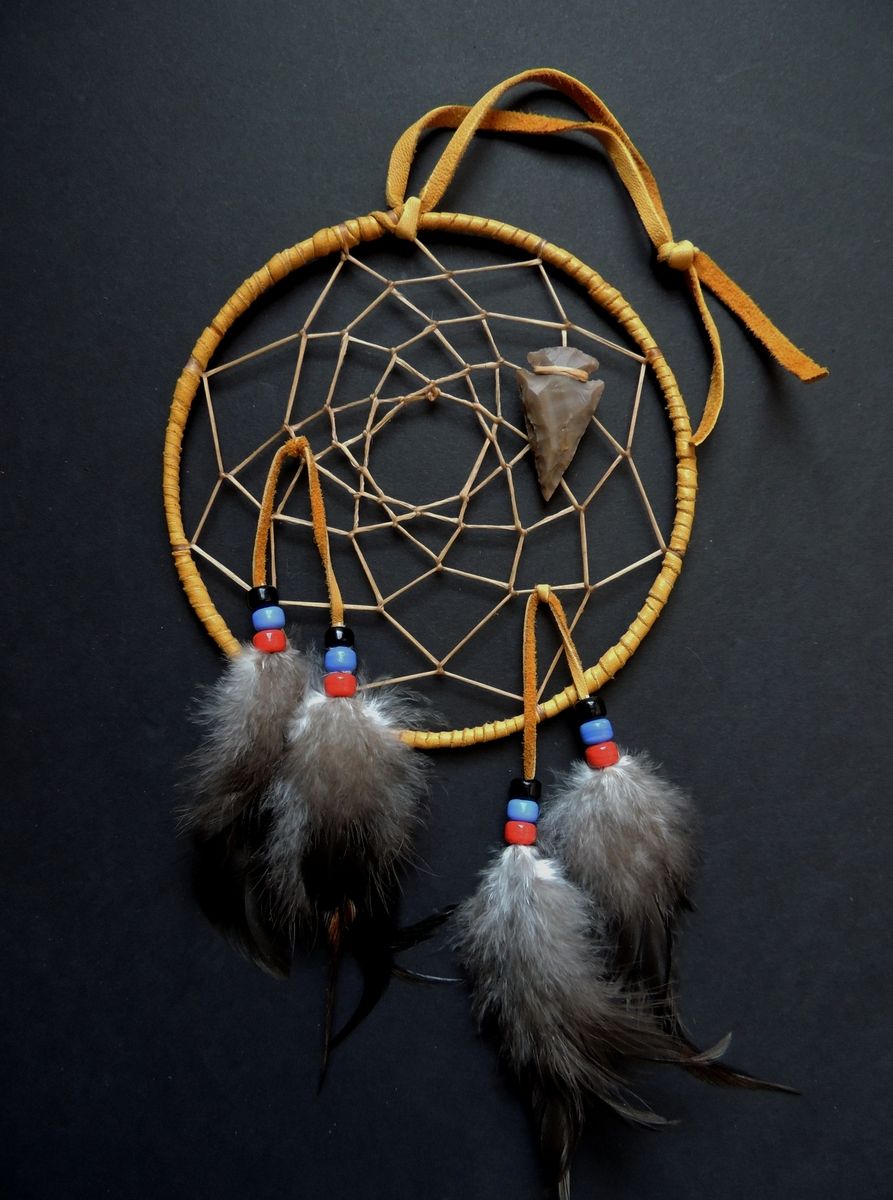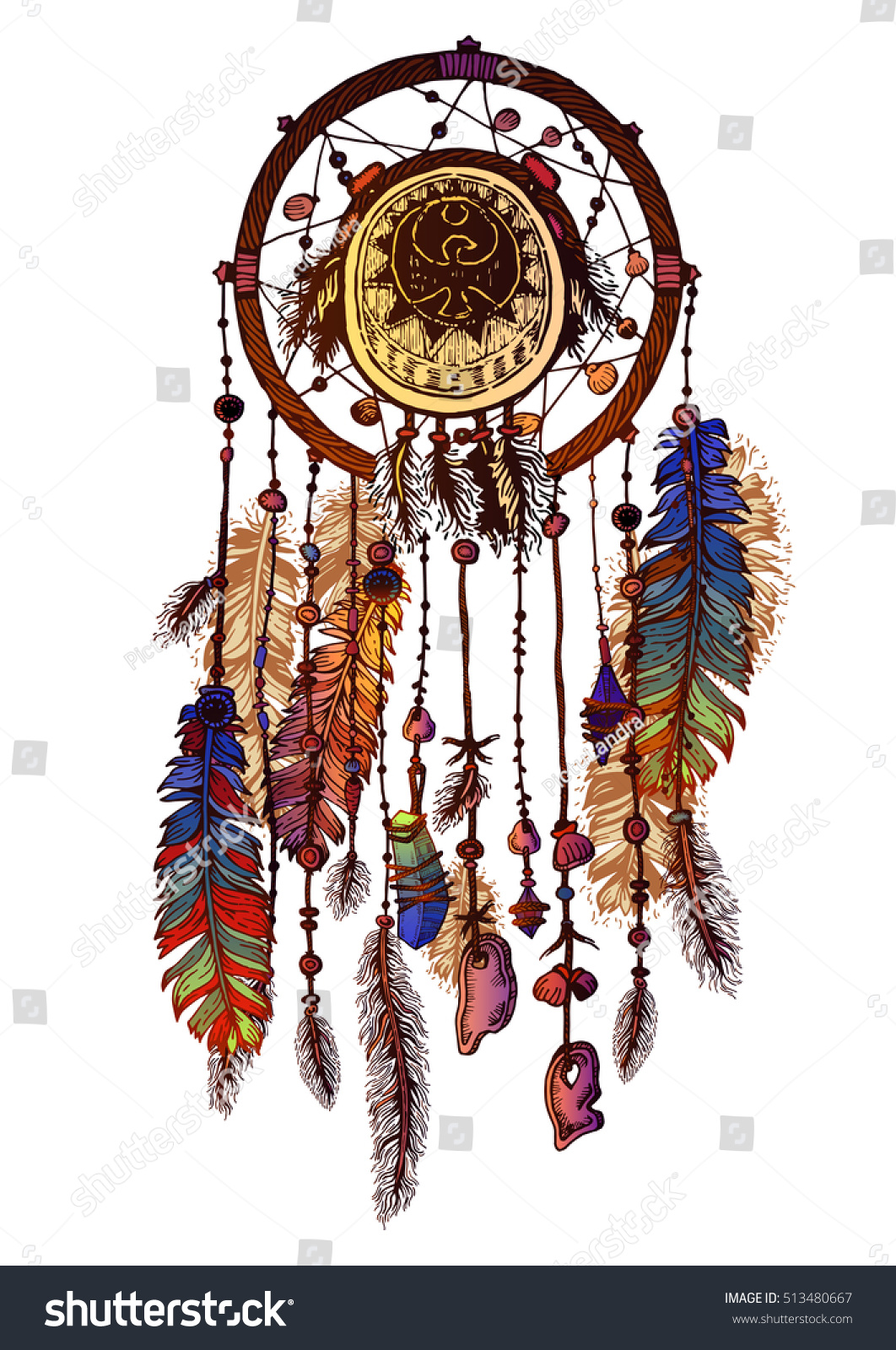Dream Catcher Native American
Dream Catcher
Facts and history about the life and lifestyles of Native American Indians. The Native American Dream Catcher, or Dreamcatcher, was devised by the Woodland group of Native Indians as a protective charm or device, originally for the children of the tribes. The Dream catcher was believed to protect a person from the bad spirits that appeared in bad dreams and nightmares. The dream catcher was constructed in a spider web design using a wooden hoop that was attached to a woven web or loose net, so it looked like a spider's web. The dream catcher was then decorated with sacred and personal objects such as feathers and beads.


A dream catcher is usually placed over a place you would sleep where the morning light can hit it. As you sleep all dreams from the spirit world have to pass through the dream catcher. Only good dreams can pass through to the dreamer while the bad dreams are caught in the webbing and are destroyed by the first rays of the morning light. 9 Famous Native American Women In History That You Need To Know Many make the hoop out of bent willow which in the northern regions needs to be collected and bent in the spring. These instructions show the alternative of making the Dream Catcher with a metal hoop and wrapping it with a buckskin thong. Popular Native American legend says Dream catchers, woven webs of sinew and feathers, snare nightmares to dissolve them in the rays of the morning sun, while letting the good dreams through. In this part of the country the dreamcatcher is a staple in all Southwest decor! Dream catchers are woven of sinew like a spider web within a hoop.
Dream Catcher Native American Tattoos
Native American dreamcatchers are an element of southwest decor that is one of the most exciting and fun home decorating styles you will find. Native American dream catchers make it easy to decorate with an American Indian theme. The southwestern Indian tribes are still active in making handcrafted artifacts.



